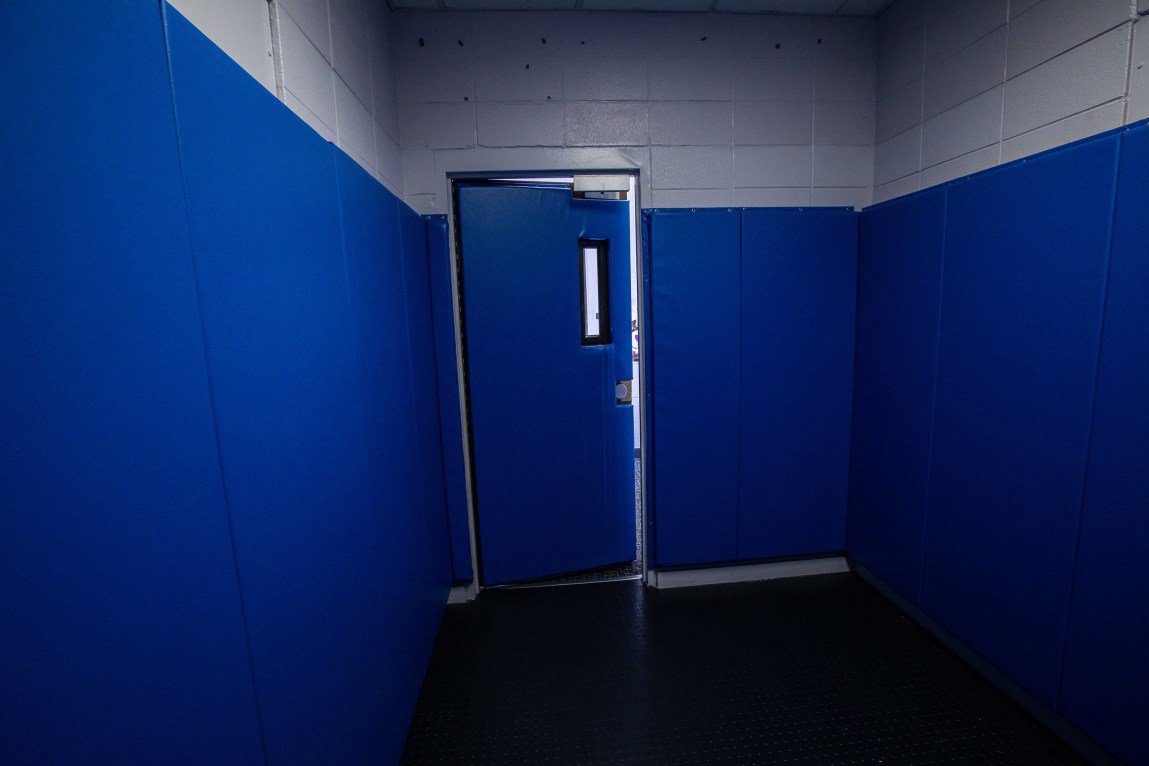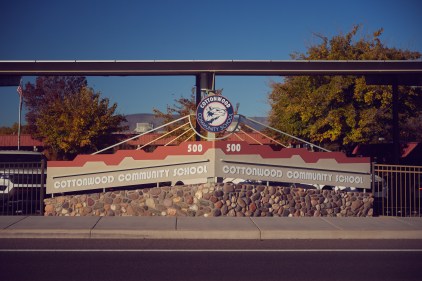Illinois school workers physically restrained or secluded nearly 2,400 students more than 15,000 times this school year, a period when many schools were closed because of the COVID-19 pandemic, new state data shows.
The data, obtained Thursday by the Chicago Tribune and ProPublica, shows that even with new rules put in place early last year, schools continued to use physical restraints and isolated timeout thousands of times. The data includes public schools, private schools and regional cooperatives that exclusively serve students with disabilities.
The release of the information comes as Illinois lawmakers weigh whether to more strictly limit when school workers can put students in seclusion and physically restrain them. The Senate voted early this week to ban locked seclusion and to prohibit schools from using other types of isolation unless students or staff are in “imminent danger” of harm. The bill, which also would end the use of prone, or face-down, restraint by the end of the next school year, awaits a vote in the House, where similar legislation stalled this year.
“This magnifies even more why we must absolutely pass this legislation and the governor must sign it into law,” said Rep. Jonathan Carroll, D-Northbrook, who has championed a seclusion ban in the House. “We have to have legislation because it has to stop.”
Opposition has stemmed mainly from a few suburban private schools that have argued prone restraint should be allowed for students in crisis. The current legislative session ends Monday.
Illinois schools’ overuse and abuse of seclusion and restraint was exposed in “The Quiet Rooms,” a ProPublica-Tribune investigation published in late 2019. Following that investigation, the Illinois State Board of Education began requiring schools to report incidents of seclusion and restraint to the state within 48 hours. The latest data is based on those reports.
The board did not provide the data to the public but released it to reporters after six months of requests.
More than 90% of the students subjected to the interventions since July 2020 were students with disabilities, according to a Tribune-ProPublica analysis of the data. More than 8 in 10 were boys, and a quarter were Black. Less than 17% of students in the state’s schools are Black.
More than 60% of students whom schools physically restrained or placed in timeout were in kindergarten through fifth grade. Two of every 10 students were in prekindergarten, kindergarten or first grade. This is the first time ISBE has tracked the age of students affected by seclusion and restraint.
The data also indicates that schools continued to use prone restraint even after state officials called it dangerous and state rules began to restrict its use. Schools reported using prone restraints on students more than 100 times during the past 10 months.
In all, 11,700 incidents of physical restraint, 2,352 incidents of timeout and 1,355 incidents of isolated timeout were reported to ISBE from July 1 through Wednesday. The reports require schools to indicate whether students or staff were in imminent danger. In more than 13,000 incidents, the schools indicated that a worker was at risk.
The data provided by state officials does not identify the schools or districts where children were secluded and restrained. While many schools switched to remote learning during the pandemic, others did continue to meet in person, including those that specifically serve children with behavioral and physical disabilities.
ISBE’s review of other data it collected from schools after “The Quiet Rooms” investigation showed that more than 2,900 students were secluded or restrained at school in the 2017-18 school year and about 3,400 in 2018-19. In the 2019-20 school year, more than 4,400 students were restrained or secluded; the total number of incidents exceeded 28,000. Data for those years did not include the age, race or gender of the students.
Prior to “The Quiet Rooms” investigation, the state did not monitor schools’ use of the practices.
ISBE spokeswoman Jackie Matthews would not say whether the state board has taken action against schools or employees who misused seclusion and restraint.
She told reporters that ISBE has partnered with Illinois State University to help coach school workers using a program called Autism Professional Learning and Universal Supports, known as A+. It’s designed to help students who have autism.
“Entities working with the A+ project have seen a reduction in instances of restraint and time out” as a result of new types of interventions, Matthews wrote in an email, though she did not provide specifics.
The state rules currently governing schools’ use of timeout and restraint were enacted first on an emergency basis and then permanently. The rules require seclusion, timeout and restraint be used only when other “less restrictive and intrusive” measures have failed to stop the danger. The interventions are not to be used as discipline or punishment.
The bill currently under consideration has similar language and would require ISBE to sanction schools that don’t comply.
Kyle Hillman, director of legislative affairs for the National Association of Social Workers, questioned whether schools tried other methods of working with students before using seclusion and restraint, and whether ISBE is adequately overseeing schools’ use of the interventions.
“There is no way you have 15,000 incidents and you tried everything else first,” he said. “If ISBE isn’t holding these schools accountable, what is going to change for these kids even if we do pass this law? … It is on ISBE to make it stop.”
Carroll, who has spoken about the traumatic experience of being secluded as a child, said “The Quiet Rooms” investigation and subsequent data collection should have put the state on notice that things had to change for students with disabilities. He said he was disappointed to hear that school workers were using seclusion and restraint in what he said were unacceptably high numbers.
“I demand answers as to why this has been brought to (ISBE’s) attention and we’re still seeing it happening. Where’s the urgency on their end?” he asked.
The bill pending in the House is a version of legislation that has been debated for 18 months.
Throughout the discussion, most public schools did not oppose the end of prone restraint, which is considered dangerous because it can restrict breathing. Some people have died after being restrained face down. One mother testified to the Senate’s education committee this month that her young son’s collarbone had been separated when school workers put him in a prone restraint. She said he continues to suffer from the experience.
“It has changed my son. This is more than just the risk of physical injury,” Susan Zykan testified.


















